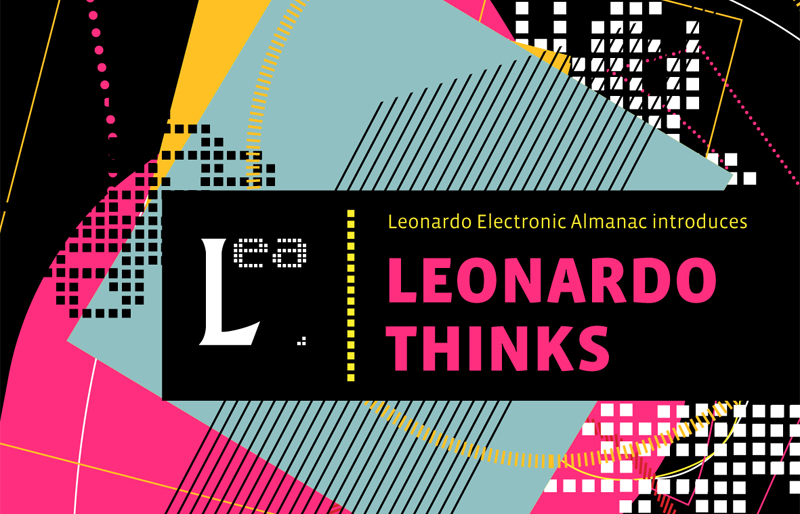
LEONARDO THINKS 1968 – 2011
Contemporary Opinion by Jack Ox
Jack Ox looks at how the LambdaRail can help to develop the paths for communication, while also forging methods to reunite dispersed communities…
The Global Artists’ Diaspora and the LambdaRail
What is happening to collaborative communities of artists whose centers of activity have been decimated by rising real-estate values? How many art-friendly cities and communities have become so expensive to live in that more and more culture workers are forced to leave, creating a growing diaspora? How do we get together again, both to collaborate and to re-compose our also-dispersed audiences?
In 2002 I was forced out of my lower Broadway loft in New York City by economic pressures. The same thing could have happened in London, Los Angeles, San Francisco, San Diego, Paris, Moscow, Madrid, Munich, Barcelona, Rome, Milan, Chicago, Brussels, Boston—the list goes on. I moved to New Orleans’s French Quarter because it reminded me of living between the East and West Villages in New York City, and there was an active art and music scene. However, Hurricane Katrina sent me literally fleeing again two days after the storm. I now reside in Albuquerque, New Mexico, a community often infused with refugees from elsewhere.
There are reports of others taking a year to travel around trying to find that perfect community, a place where one is able to concentrate on working rather than on 24/7 survival. Some people find refuge in universities, as I did at the University of New Mexico. The result is that our audiences and collaborators are scattered physically throughout a growing geographic area.
One way we have overcome distance has been the Internet. Thanks to search engines that are equipped to track our activities, physical separation is much less burdensome. Before the Internet, artists depended on showing their work in actual physical spaces called galleries and museums. These spaces were necessarily located on one very small footprint within a city or specific geographical location and were not easily visited by everyone in the world. Exhibitions were also limited by duration and the times when the institution was open for viewing.
There have been many experiments on the Internet with real-time performances and interactions between geographically separated participants and audience members. However, I believe that the results of these events have up to now been disappointing. Some artists have moved to Internet2, an advanced network application for research and higher education, through use of the now-ubiquitous AccessGrid (AG) [1] virtual conference rooms. However, although Internet2 is fast, it still has significant delay, which is irregular in time and amount.
Technology is catching up to the vision of effortless communication over immense geographical space with the creation of the Global LambdaGrid [2] and the National LambdaRail [3], a dedicated optical network being developed by a new consortium of universities and technology companies. How is LambdaRail different from Internet2? Simply put, it is faster, with fewer and more predictable time delays, and therefore can be utilized successfully even by geographically distributed musicians playing together.
This new technology can begin to put dispersed artist communities back together again. Larry Smarr, the founder and former director of the National Center for Supercomputing Applications (NCSA) at the University of Illinois at Urbana-Champaign, is a visionary who helped bring the Internet to fruition through NCSA Mosaic. His new institute, the California Institute for Telecommunications and Information Technology (Cal-(IT)2), concentrates on the future of the Internet. During a speech at iGRID2005, Smarr told the audience that we have already gone beyond Thomas Friedman’s notion of the world as flat. With the emergence of this new technology, the earth can become one spot or point. So far, one can only access this “spot” in a limited number of places. However, as pioneering artists devote themselves to designing complex performances for the LambdaRail, they can help to develop the paths to future access for others while also forging methods to reunite their own communities. [4]
Endnotes
[1] http://www.accessgrid.org.
[2] http://www.glif.is.
[3] http://www.nlr.net.
[4] See, for example, Gridjam, a real-time, interactive, partially improvised 3D performance and multimedia event for the LambdaRail.
Jack Ox is a Leonardo International Co-Editor, Research Assistant Professor in the College of Fine Arts at the University of New Mexico and an Artist in Residence and Research Associate at the ARTS Lab. Her website is http://www.jackox.net/
ISSN No: 1071-4391
Author: Jack Ox, Leonardo International Co-Editor E-mail: jackox@bway.net
Originally published in: Leonardo October 2006, Vol. 39, No. 5: 389–389
Print: ISSN 0024-094X, Online: ISSN 1530-9282, DOI: http://www.mitpressjournals.org/doi/abs/10.1162/leon.2006.39.5.389.
Leonardo is a registered trademark of the ISAST.
Files:
